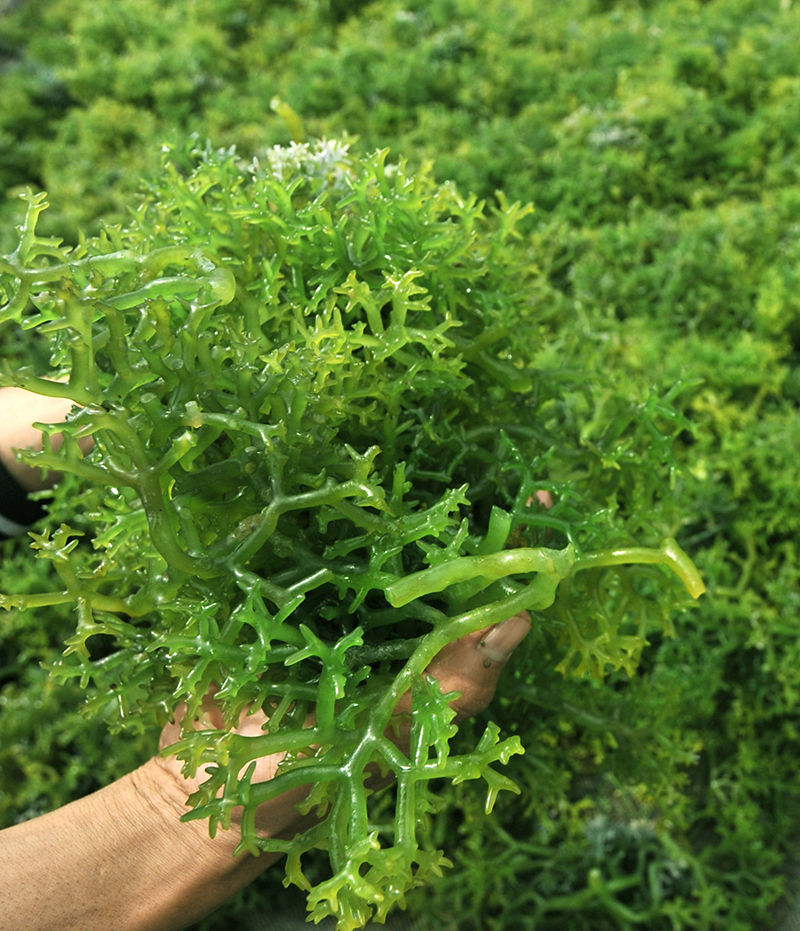Carrageenans are large, highly flexible molecules that form curling helical structures. This gives them the ability to form a variety of different gels at room temperature. They are widely used in food and other industries as thickening and stabilizing agents.
Euchema Denticulatum being farmed for iota-carrageenan.


Molecular Structure
All carrageenans are high-molecular-weight polysaccharides and are mainly made up of alternating 3-linked b-D-galactopyranose (G-units) and 4-linked a-D-galactopyranose (D-units) or 4-linked 3,6-anhydro-a-D-galactopyranose (DA-units), forming the disaccharide repeating unit of carrageenans.
Kappa, Iota, Lambda: three main commercial classes of carrageenan
Kappa forms strong, rigid gels in the presence of potassium ions and reacts with dairy proteins. It is sourced mainly from Kappaphycus alvarezii.
Iota forms soft gels in the presence of calcium ions. It is produced mainly from Eucheuma denticulatum.
Lambda does not gel and is used to thicken dairy products.
The primary differences that influence the properties of kappa, iota, and lambda carrageenan are the number and position of the ester sulphate groups on the repeating galactose units. Higher levels of ester sulphate lower the solubility temperature of the carrageenan and produce lower-strength gels or contribute to gel inhibition (lambda carrageenan).
Many red algal species produce different types of carrageenans during their developmental history. For instance, the genus Gigartina produces mainly kappa carrageenans during its gametophytic stage and lambda carrageenans during its sporophytic stage.
All are soluble in hot water, but in cold water, only the lambda form (and the sodium salts of the other two) are soluble.
When used in food products, carrageenan has the E numbers E407 or E407a when present as “processed eucheuma seaweed”. Technically carrageenan is considered a dietary fibre.
In parts of Scotland and Ireland, where it is known by a variety of local and native names, Chondrus crispus is boiled in milk and strained before sugar and other flavourings such as vanilla, cinnamon, brandy, or whisky are added. The end product is a kind of jelly similar to panna cotta, tapioca, or blancmange.
Grades
There are two basic grades of carrageenan, refined (RC) and semi-refined (SRC). In the United States, both grades are labelled as carrageenan. In the European Union, refined carrageenan is designated by the E number E-407 and semi-refined carrageenan as E-407a. Refined carrageenan has a 2% maximum for acid-insoluble material and is produced by alcohol precipitation or potassium chloride gel press process. Semi-refined carrageenan has a much higher cellulose content and is produced in a less complex process. Indonesia, the Philippines, and Chile are the three main sources of raw material and extracted carrageenan.
